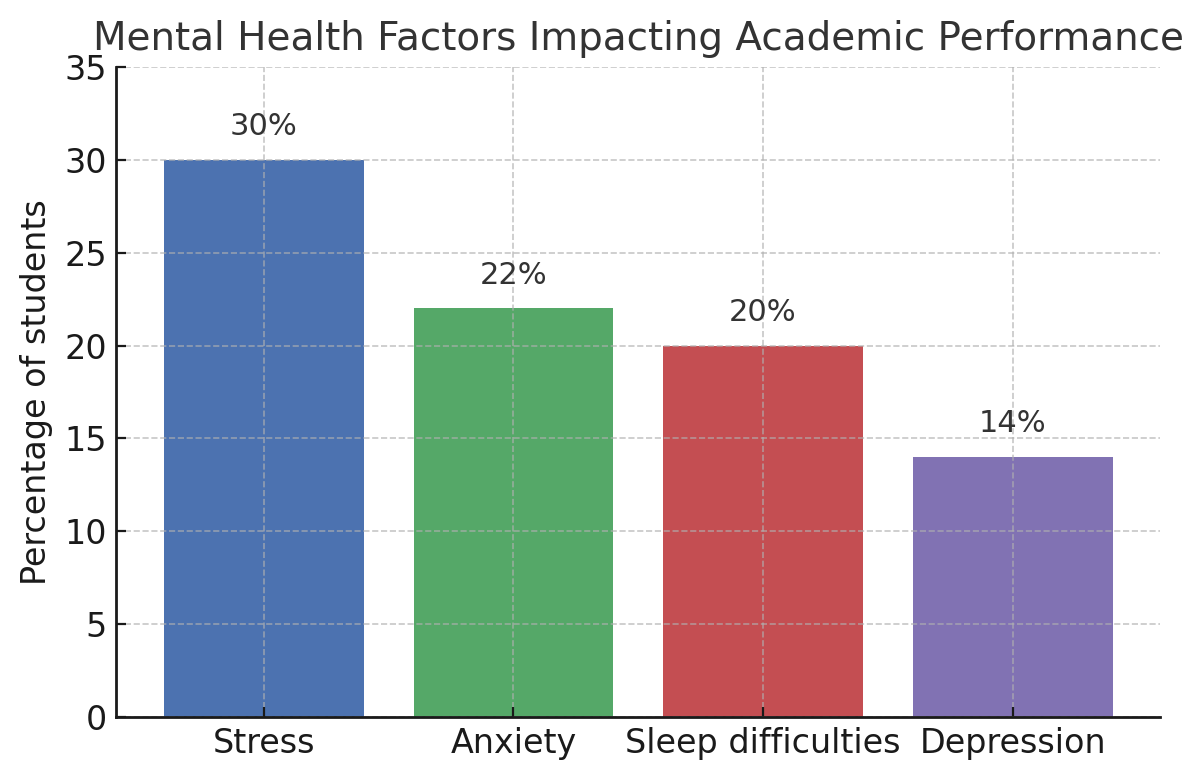
Mental health affects everything students do—how they learn, connect with others, and cope with challenges. Yet, many schools and families overlook it. Stress, anxiety, and emotional exhaustion are rising among students. What they need isn't more pressure to perform. They require support networks that balance well-being with academics.
The good news? There are genuine, research-backed techniques to help students feel emotionally stronger. These aren’t theories. They’re realistic, often easy strategies that schools, educators, and families can adopt starting today.
This article provides 12 effective approaches to promote and improve students’ mental health without the fluff.
Table of Content
- Make Mental Health a Normal Topic
- Help Teachers Recognize Early Warning Signs
- Add Mindfulness Moments to the School Day
- Create Quiet Spaces for Breaks
- Introduce Peer Mentoring Programs
- Talk About Sleep and Screens Honestly
- Teach Emotional Skills, Not Just Academics
- Make Counseling Easy to Access
- Move More, Sit Less
- Avoid Overloading Students with Homework
- Involve Families in Mental Health Conversations
- Model Healthy Behavior as Adults
- Conclusion:

Make Mental Health a Normal Topic
Students often bottle up feelings because they're afraid of judgment. They might think talking about stress or sadness makes them weak. That silence leads to bigger problems.
When teachers and parents openly talk about emotions, it gives students permission to do the same. Start with small things:
-
Ask students how they’re really feeling.
-
Use mood charts or one-word check-ins.
-
Share real emotions during class discussions.
Even casual conversations help remove the fear of opening up.
Help Teachers Recognize Early Warning Signs
Teachers spend hours every day with students, which puts them in a strong position to notice when someone is struggling emotionally. However, many teachers haven’t been trained to identify mental health red flags.
Schools should provide regular workshops to help educators:
-
Spot signs of emotional distress
-
Understand changes in behavior
-
Know when and how to refer a student for help
Even simple awareness can prevent small issues from turning into serious ones.
Add Mindfulness Moments to the School Day
Mindfulness is not a fad. It's a tried-and-true method for controlling emotions and stress. It teaches kids how to respond and pause instead of reacting.
Daily brief mindfulness sessions could consist of the following:
-
Breathing deeply
-
Directed visualizations
-
Journaling on thankfulness
-
Quiet time with calming music
This isn’t about meditation specialists. It’s about establishing a few minutes of tranquility that helps pupils reset.
Create Quiet Spaces for Breaks
Not all students handle stress in the same way. Some need a break to collect themselves, but a noisy hallway or crowded classroom doesn’t always allow that.
Designating a small, calm space where students can go when overwhelmed helps. It could include:
-
Soft seating
-
Stress balls or fidget tools
-
Low lighting
-
Grounding exercises are written on posters
Giving students permission to take a quiet break shows that their emotional needs are valid.
Introduce Peer Mentoring Programs
Students often feel more comfortable opening up to each other than to adults. Peer support programs provide a safe, relatable way for students to talk about what they’re going through.
Schools can set up:
-
Buddy systems
-
Peer counseling groups
-
Mental health clubs led by trained student leaders
These programs foster connection and reduce the feeling of isolation, especially among new or shy students.
Talk About Sleep and Screens Honestly
Too many students stay up late scrolling or working on assignments. The result? Poor sleep and higher stress.
Rather than lecturing, schools can:
-
Share facts about how screens affect sleep
-
Encourage screen-free wind-down routines
-
Adjust homework loads to avoid late-night cramming
Good sleep hygiene should be treated like academic success: worth discussing and supporting.
Teach Emotional Skills, Not Just Academics
Schools teach math, science, and writing. But few teach students how to manage feelings. Emotional literacy helps students handle setbacks, deal with conflict, and express themselves clearly.
Start small:
-
Add emotion vocabulary to early grades
-
Practice role-play for resolving arguments
-
Use literature to explore how characters feel and why
These lessons can fit into existing subjects with a little creativity.
Make Counseling Easy to Access
Students should never feel like they have to "earn" help. Unfortunately, long wait times or complicated referral processes keep many from getting support.
Instead:
-
Offer open office hours
-
Allow anonymous question boxes
-
Share clear steps on how to talk to a counselor
Students who know help is easy to reach are more likely to seek it before things worsen.
Move More, Sit Less
Physical activity isn’t just about fitness. It's a great way to raise mood and reduce worry. Movement lowers stress and enhances brain function.
Schools can:
-
Build short movement breaks into classes
-
Offer non-competitive options like dance or walking clubs
-
Allow flexible seating or standing desks
Encouraging movement shows students that self-care includes the body and the mind.
Avoid Overloading Students with Homework
Stress doesn’t teach better. Too much homework often backfires. It reduces sleep, increases anxiety, and discourages learning.
Instead of piling on work, educators can:
-
Assign purposeful, manageable homework
-
Offer choices in assignments
-
Set clear time limits
Balance helps students stay motivated and mentally healthy.
Involve Families in Mental Health Conversations
Parents may notice changes at home before teachers do. That makes them essential allies.
Schools can:
-
Host family wellness nights
-
Share tips in newsletters
-
Encourage open communication between home and school
When everyone is on the same page, students receive consistent support.
Model Healthy Behavior as Adults
Students learn more from adults' actions than their words. If educators show students how to manage stress, take breaks, and talk about emotions honestly, they will follow.
Examples include:
-
Saying, “I need a quick reset. Let’s all take a breath together.”
-
Sharing coping skills that work for them
-
Showing kindness to themselves and others
-
These basic measures generate an emotionally safe culture across the institution.
Conclusion:
Improving student mental health doesn’t rely on one huge initiative. It’s about completing tiny tasks regularly.
From how we talk about feelings to how we manage the school day, every decision can help or hurt student well-being. It starts with awareness, followed by action.
The best part? These 12 strategies aren’t just for schools. Families, communities, and students can participate. Everyone gains when we prioritize mental health as we do academics.
Let’s ensure students don’t just survive school — they feel good doing it.
Mental Health Students

